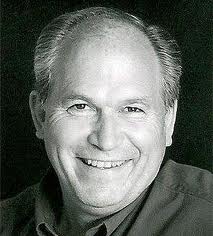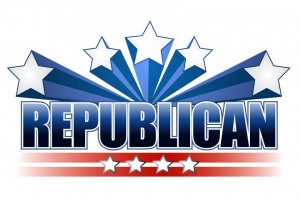Below is an excerpt, with a link to The American Spectator where you can read the rest, from a brilliant book review written by my brilliant father. The book, Ike and Dick: Portrait of a Strange Political Marriage by Jeffrey Frank,  chronicles Richard Nixon and Dwight Eisenhower’s strange relationship. My father is a former Nixon speechwriter so he knows a little about which he writes. I’ve been told, mostly by him, that I’m a chip off the old block. I might someday believe it if I can ever write anything as close to as good as this review:
chronicles Richard Nixon and Dwight Eisenhower’s strange relationship. My father is a former Nixon speechwriter so he knows a little about which he writes. I’ve been told, mostly by him, that I’m a chip off the old block. I might someday believe it if I can ever write anything as close to as good as this review:
“Damn,” was the initial reaction. Although 40 years have passed, here comes another one: another book by another of those East Coast liberal scribblers—Pat Buchanan calls them “the offspring of the old jackal pack”—out to kick Richard Nixon around one more time, and in the process embellish the Nixon caricature that has replaced the man in so much of today’s popular historicizing.
But as it turns out, that’s not it at all. True, Jeffrey Frank has all of what normally would pass for anti-Nixon credentials: stints as an editor at the Washington Post and New Yorker and author of four well-received novels, including the “Washington Trilogy.” But despite those bona fides, Frank appears, if not admiring of, then not hostile and perhaps even sympathetic to Nixon as a striving politician struggling to win the approval of Dwight D. Eisenhower, one of the truly great figures of the last century. Frank even seems sensitive to the relationship that would necessarily develop between these two unique and highly intelligent men, culminating in the union of their families with the marriage of Julie Nixon and David Eisenhower.
“Nixon’s early relationship with Eisenhower,” Frank writes, “who was old enough to be his father, had a filial aspect, though one without much filial affection.” Eisenhower, Nixon believed, expected “rapid, absolute obedience,” and while serving as Ike’s vice president, he often felt “like a junior officer coming in to see the commanding general”—as indeed he was. And that is no doubt the way Eisenhower looked at Nixon: as a junior and later senior staff officer, with a specific place on the organizational chart. Later, writes Frank, Eisenhower would come to value Nixon’s “logical mind” and his loyalty. He also appreciated the standing Nixon gave him with the anti-Communist right.
Problems first arose between the two in 1952, shortly after Senator Nixon had been chosen as Eisenhower’s running mate, when news stories charged Nixon with benefiting from a secret fund supplied by wealthy donors. Eisenhower was annoyed that his still unproven vice presidential candidate was tainting his campaign with a whiff of scandal, no matter how faint. He gave Nixon a choice, although it was never quite expressed directly, and Eisenhower preferred to send indirect suggestions through emissaries like Murray Chotiner and Gov. Thomas E. Dewey, a political friend of Nixon and an Eisenhower favorite. Nixon was to clear his name or drop off the ticket. He, in effect, was told he was on his own.
In a speech delivered live on television from the El Capitan Theater in L.A., Nixon did just that. In what became known as the “Checkers speech,” called by the author and journalist Sam Leith “a rhetorical classic,” Nixon accounted for every cent that had been donated to his campaign. And when that was settled, in a move he called “unprecedented in the history of politics,” he told his audience he would give “a complete financial history: everything I’ve earned, everything I’ve spent, everything I own.” He referenced Pat Nixon’s “respectable Republican cloth coat” (they couldn’t afford a mink). He added that there was one gift from a supporter his family intended to keep: a cocker spaniel puppy named Checkers. In response, Republican Party headquarters was flooded with some 4 million communiqués.
General Eisenhower, watching from Cleveland where he was to speak, would later tell his audience: “I have seen many brave men in tough situations. I have never seen any come through in such fashion as Senator Nixon did tonight.” Yet, writes Frank, “Eisenhower was not entirely pleased by Nixon’s performance.” It took the decision of whether to keep Nixon on the ticket out of his hands, and when Nixon suggested all candidates reveal their finances, that included Eisenhower. But for the moment, the speech had demonstrated that his determined young staff officer had something extra, and when the Nixons flew to meet him in West Virginia, Eisenhower “came bounding up the stairs” of the plane, put his arm around Nixon, and told him, “You’re my boy.”
According to Frank, that would remain somewhat in question. But perhaps, as he points out, although the ongoing uncertainty about Nixon’s relationship with Eisenhower would make life harder, “there was no way to pretend that important decisions about Nixon’s future belonged to Eisenhower alone.” Or perhaps, put another way, Nixon would have to take his future in his own hands and not depend on General Eisenhower for prompting or direction. Eisenhower liked officers able to take the initiative.
Read the rest here.





















